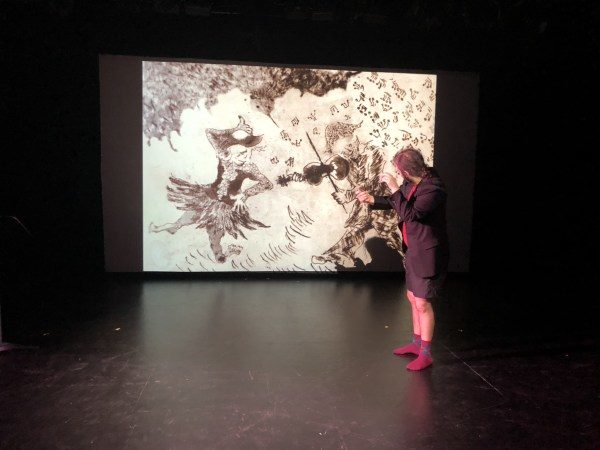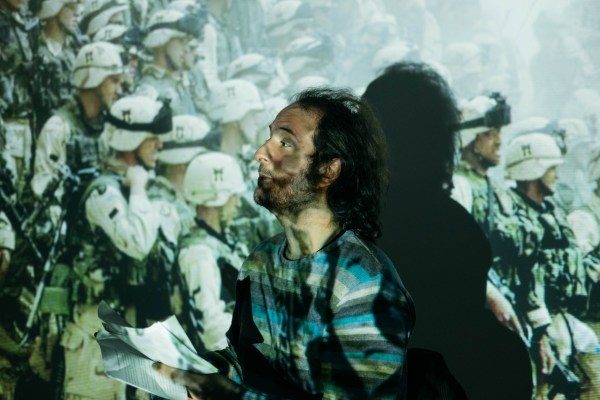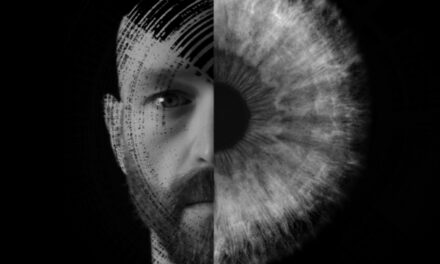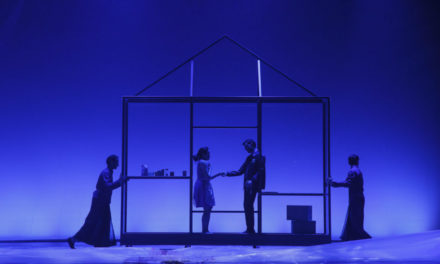Montreal, Québec
Willow White reviews Thought Experiment Productions’ 4’33” In Baghdad in the Montreal Fringe Festival, runner-up for the MainLine Creativity Award:
Strolling onto a brightly lit stage, Nicolas Royer-Artuso welcomes his audience, apologizes for his nervousness, and launches into an explanation of his most recent research project. The character Royer-Artuso portrays is a musicologist, who has received a grant to analyze a performance of the song 4’33” at a music festival in Baghdad many years prior. The song, written by experimental composer John Cage, instructs the musician not to play their instrument, but to sit in silence for four minutes and thirty-three seconds. The silent song displays that sound—all sound—can be music.

Nicolas Royer-Artuso in 4’33” In Baghdad. Photo by Ülfet Sevdi.
Inspired by techniques of the Theatre of the Oppressed and experiences living in Syria, Tunisia, Morocco, and Turkey, Royer-Artuso and creator/director Ülfet Sevdi turn Cage’s theory of music on its head. Irony is at the heart of 4’33” In Baghdad; this becomes clear when Royer-Artuso shows a video clip of the supposed music festival–which turns out to be CNN footage of the 2003 bombing of Baghdad by the US military. The sounds of gunfire, explosions, and roaring fires are particularly shocking, as Royer-Artuso has prepared us to listen carefully to the silent notes of 4’33.” When the clip ends, Royer-Artuso grins, explaining that it is impossible to tell how long the music festival actually lasted as it was difficult to hear over the bombing.
4’33” In Baghdad reminds us not only of the human cost of the US invasion of Iraq, but also of the academic complicity in distancing and intellectualizing warfare. Royer-Artuso and Sevdi turn an especially critical eye on institutions of government, education, and military for disregarding human suffering.
The ironic message of 4’33” In Baghdad can be summed up in one particular sentiment that Royer-Artuso borrows from twentieth-century philosopher George Santayana: “Music is essentially useless, as is life.” By the end of the performance, it’s clear how ridiculous this statement truly is. Such disregard is an excuse afforded only to those in positions of power and for whom survival is not precarious. This absurdity is reflected in the cavalier attitude of Royer-Artuso’s character, who occasionally breaks into a G-rated strip-tease. At first, the strip-tease functions as a funny way to distance the audience from the tragic themes, but as the performance progresses and the content becomes increasingly disturbing—at one point Royer-Artuso repeats a clip of a woman screaming as he taps his foot to the “music”—the strip-tease becomes darkly ironic and discomforting.

Nicolas Royer-Artuso in 4’33” In Baghdad. Photo by Ülfet Sevdi.
After the performance, Sevdi explains to me that through 4’33” In Baghdad she and Royer-Artuso wanted to show that “oppression cannot be aesthetic.” This is not to say that the oppressed cannot create art, but that the act of oppression is itself a direct contradiction to art. “There is no equality in silence,” notes Royer-Artuso.
Both comic and tragic, 4’33” In Baghdad ultimately leaves its audience with a haunting reminder of the horrors of war and the impossibility of art for art’s sake.
4’33” In Baghdad plays at the Montreal Fringe until June 14, 2018, and at the Toronto Fringe from July 6-15, 2018. For more information about other performances of 4’33” In Baghdad, follow Thought Experiment Productions’ Facebook page.
This article originally appeared in Alt.Theatre on June 18, 2018, and has been reposted with permission.
This post was written by the author in their personal capacity.The opinions expressed in this article are the author’s own and do not reflect the view of The Theatre Times, their staff or collaborators.
This post was written by Willow White.
The views expressed here belong to the author and do not necessarily reflect our views and opinions.


















